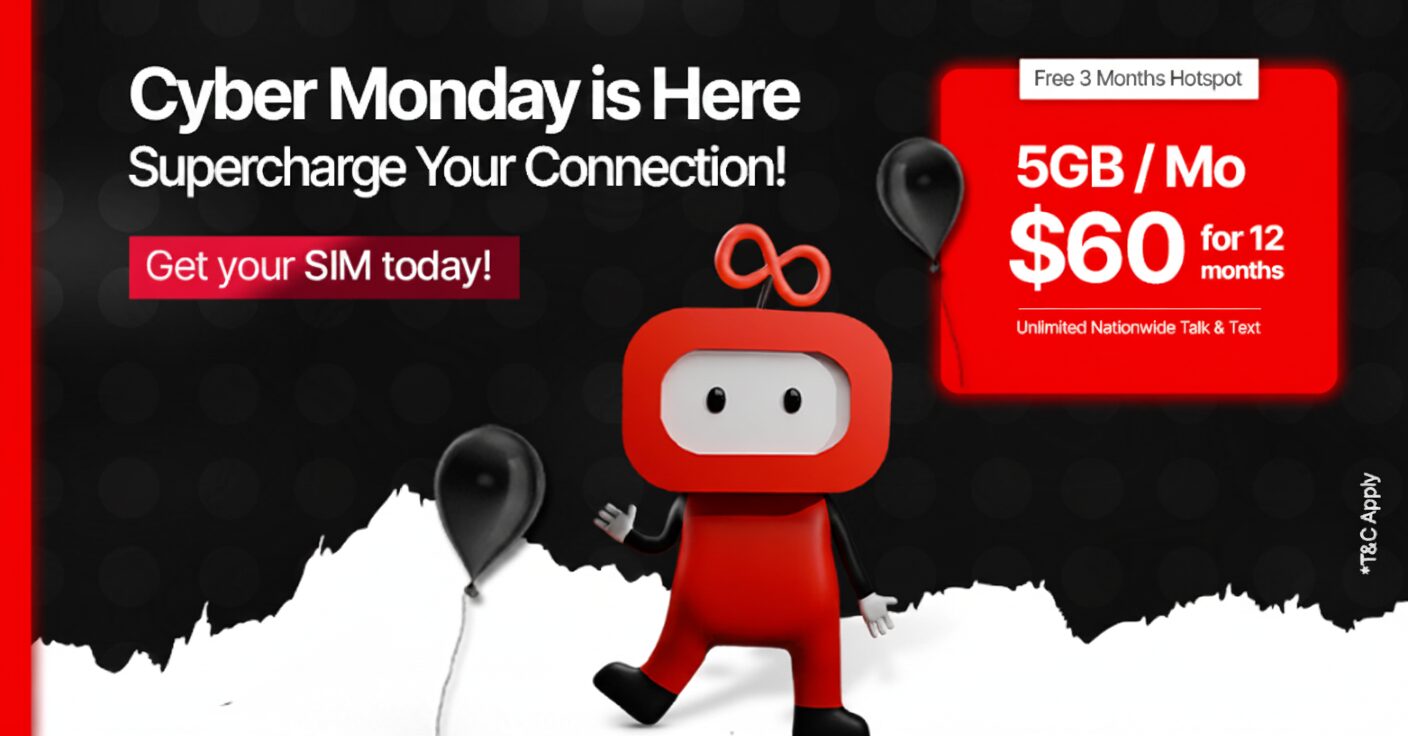Imagine this: you’re standing at a crossroads, phone in hand, trying to decide between two paths, one where you pay upfront for control and flexibility, and another where you enjoy premium perks but pay later. This is the classic dilemma of choosing between prepaid and postpaid mobile plans. With the telecom industry evolving rapidly in 2025, understanding the prepaid vs postpaid debate is more crucial than ever. Whether you’re a budget-conscious student, a heavy data user, or someone who values convenience, this decision impacts your wallet, connectivity, and overall mobile experience. In this blog, we’ll break down the prepaid and postpaid differences, explore what is prepaid and what is postpaid, and answer the burning question: is postpaid better than prepaid? By the end, you’ll have a clear picture of which plan aligns with your needs, with a special focus on why Infimobile’s prepaid plans stand out.
What is Prepaid?
A prepaid mobile plan is all about paying upfront for your mobile services. You purchase a specific amount of talk time, data, or SMS, and once you’ve used it up, you need to recharge to continue. Think of it like filling a gas tank you pay for the fuel in advance and drive until it’s empty. Prepaid plans are known for their flexibility and cost control, making them a go-to choice for students, travelers, or anyone looking to avoid unexpected bills.
Key Features of Prepaid Plans:
- No Contracts: You’re not tied to a long-term commitment, so you can switch plans or providers without penalties.
- Budget-Friendly: Pay only for what you use, with no risk of overspending.
- No Credit Checks: Accessible to everyone, regardless of credit history.
- Customizable Plans: Choose daily, weekly, or monthly recharges based on your usage.
Prepaid plans are ideal for light users or those who want to keep a tight grip on their mobile expenses. However, they may come with limitations, such as lower data caps or slower speeds during network congestion.
What is Postpaid?
A postpaid plan, on the other hand, follows a “use first, pay later” model. You select a plan with a fixed monthly fee, use the services throughout the billing cycle, and receive a bill at the end. It’s like dining at a restaurant where you enjoy the meal first and settle the bill afterward. Postpaid plans often come with higher data allowances, premium perks, and uninterrupted service, appealing to heavy users or those who prefer convenience.
Key Features of Postpaid Plans:
- Higher Data Limits: Often include unlimited or generous data allowances for streaming, gaming, or work.
- Premium Perks: Free subscriptions to OTT platforms (e.g., Netflix, Amazon Prime), priority customer service, and international roaming.
- Device Financing: Many postpaid plans offer discounted or installment-based smartphone purchases.
- Consistent Billing: Fixed monthly bills make budgeting predictable, though extra usage can lead to higher costs.
Postpaid plans suit professionals, families, or anyone who values seamless connectivity and added benefits. However, they may require credit checks and could involve contracts, which can limit flexibility.
Prepaid and Postpaid Difference: A Detailed Comparison
Understanding the prepaid and postpaid differences is key to making an informed choice. While both plans provide essential mobile services like calls, texts, and data, they differ significantly in structure, cost, and features. Let’s break it down:
Payment Structure
- Prepaid: Make an upfront payment for a fixed set of services. Once your balance is exhausted, services pause until you recharge.
- Postpaid: Make the payment after usage, usually at the end of the monthly billing cycle. Bills include a fixed plan fee plus any additional charges for exceeding limits.
Flexibility
- Prepaid: Offers unmatched flexibility. You can change plans or providers anytime without penalties, making it ideal for those who dislike commitment.
- Postpaid: Often involves contracts (though contract-free options exist in 2025). Switching providers may incur exit fees, and credit checks can be a barrier.
Cost Control
- Prepaid: Prevents overspending since you only use what you’ve paid for. No surprise bills, which is great for budget-conscious users.
- Postpaid: Risk of “bill shock” if you exceed data or call limits, as extra usage can significantly increase your bill.
Data and Speed
- Prepaid: Typically offers lower data caps (e.g., 2–35GB/month) and may face throttling or reprioritizations during network congestion.
- Postpaid: Provides higher data limits (e.g., 50–100GB/month) and often prioritizes users for faster speeds, especially on premium plans.
Perks and Benefits
- Prepaid: Limited perks, focusing on core services like talk, text, and data. Some providers offer data rollover or international calling add-ons.
- Postpaid: Includes premium benefits like free OTT subscriptions (e.g., Disney+ Hotstar, Netflix), priority customer support, and roaming packages.
Suitability
- Prepaid: Best for light users, students, or travelers who need short-term plans or want to avoid contracts.
- Postpaid: Ideal for heavy users, professionals, or families who need consistent connectivity and value-added services.
The prepaid vs postpaid choice hinges on your lifestyle. If you’re a light user who prioritizes control, prepaid is the ideal choice. If you’re a data-hungry user seeking perks, postpaid might be the better fit.
Is Postpaid Better Than Prepaid?
The question, is postpaid better than prepaid, doesn’t have a one-size-fits-all answer, it depends on your needs. Let’s explore the advantages and disadvantages of guiding your decision.
Why Choose Prepaid?
- Cost-Effective for Light Users: If you use minimal data (e.g., 1–3GB/month) and mostly rely on Wi-Fi, prepaid plans are cheaper. For example, plans like those from Infimobile start at just $20/month for unlimited talk, text, and 3GB data.
- No Bill Shock: Since you pay upfront, there’s no risk of unexpected charges.
- Flexibility: Switch plans or providers without hassle, perfect for travelers or those with fluctuating needs.
- Drawbacks: Limited data, slower speeds during peak times, and fewer perks compared to postpaid.
Why Choose Postpaid?
- Premium Features: Postpaid plans often include free streaming subscriptions, international roaming, and device financing, adding significant value.
- Higher Data Caps: Ideal for heavy users who stream, play games, or work on the go, with plans offering 50GB or more.
- Uninterrupted Service: No need to recharge services even if you exceed limits, though this can lead to higher bills.
- Drawbacks: Potential for bill shock, credit checks, and less flexibility due to contracts.
In 2025, the prepaid vs postpaid debate is less about cost and more about lifestyle. Postpaid plans may seem pricier (e.g., $65–$100/month for major carriers like AT&T or Verizon), but they offer robust performance and perks. Prepaid plans, especially from MVNOs like Infimobile, can be significantly cheaper ($20–$40/month) while still leveraging major networks. Ultimately, is postpaid better than prepaid? It’s better if you need premium features and don’t mind a higher cost. Prepaid wins for simplicity and savings.
Factors to Consider When Choosing
Before diving into the prepaid vs postpaid decision, evaluate these factors:
- Usage Patterns: Are you a heavy streamer or a casual user? Heavy users may benefit from postpaid’s higher data limits, while light users thrive on prepaid.
- Budget: Prepaid plans are ideal for tight budgets, while postpaid suits those who can afford fixed monthly bills.
- Network Needs: Check coverage in your area. Prepaid plans from MVNOs like Infimobile use major carriers’ networks, ensuring reliable connectivity.
- Perks: Do you value OTT subscriptions or roaming benefits? Postpaid plans often include these, but some prepaid providers offer add-ons.
- Flexibility: If you dislike contracts or frequent recharges, consider your tolerance for commitment.
Why Infimobile’s Prepaid Plans Shine
At Infimobile, we understand that the prepaid vs postpaid decision can be overwhelming. That’s why we’ve crafted prepaid plans that combine affordability, flexibility, and quality, making us the best choice for budget-conscious users in 2025. As a mobile virtual network operator (MVNO), we leverage the robust networks of major carriers to deliver reliable 4G and 5G connectivity without the hefty price tag. Here’s why Infimobile stands out:
- Affordable Pricing: Our plans start at just $20/month for unlimited talk, text, and 3GB of data, with options up to 20GB for heavy users. No hidden fees, no surprises.
- No Contracts: Enjoy the freedom to switch or pause plans anytime, perfect for students, travelers, or anyone seeking flexibility.
- eSIM Compatibility: Activate your plan instantly with our eSIM technology, no physical SIM required. It’s secure, convenient, and ideal for modern devices.
- Nationwide Coverage: Powered by top-tier networks, Infimobile ensures seamless connectivity, whether you’re in urban hubs or rural areas.
- Easy Management: Our user-friendly app lets you track usage, recharge, and customize plans with ease.
We’re not just a prepaid provider we’re your partner in staying connected without breaking the bank. Whether you’re a student juggling studies, a freelancer working remotely, or a traveler exploring new horizons, Infimobile’s prepaid plans are designed to fit your life. No credit checks, no long-term commitments, just straightforward mobile services tailored to you.
Make the Smart Choice with Infimobile
Choosing between prepaid vs postpaid mobile plans comes down to your priorities of control and savings or premium perks and convenience. If you’re wondering what is prepaid or what is postpaid, it’s clear that prepaid offers flexibility and cost control, while postpaid provides higher data limits and exclusive benefits. The difference between prepaid and postpaid lies in payment structure, flexibility, and included features though neither is inherently better than the other. Instead of asking if postpaid is better than prepaid, ask what suits your lifestyle.
At Infimobile, we believe prepaid is the way to go for most users in 2025. Our plans empower you to stay connected on your terms, with affordable pricing, no contracts, reliable coverage and full BYOP (Bring Your Own Phone) support. Whether you’re streaming, calling, or browsing, we’ve got you covered with plans that adapt to your needs. Ready to make the switch? Visit our website to explore our prepaid plans and experience connectivity that’s refreshingly simple and budget friendly. Choose Infimobile, and let’s stay









